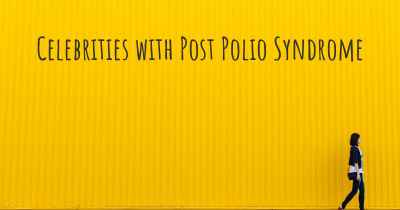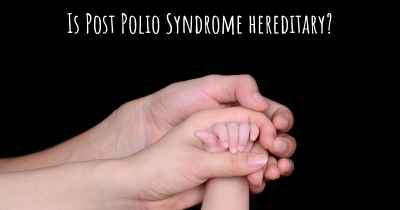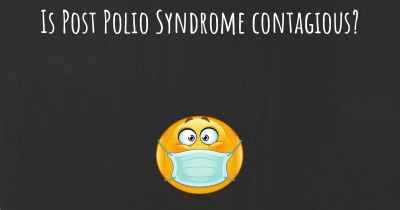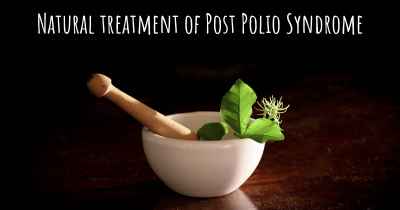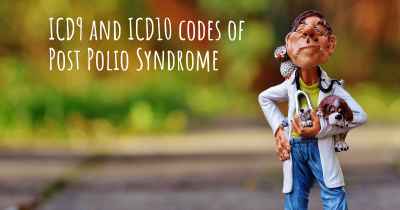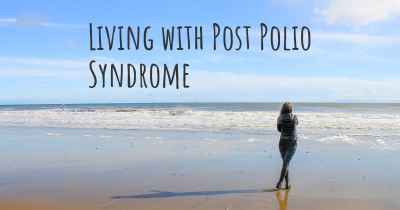What are the best treatments for Post Polio Syndrome?
See the best treatments for Post Polio Syndrome here
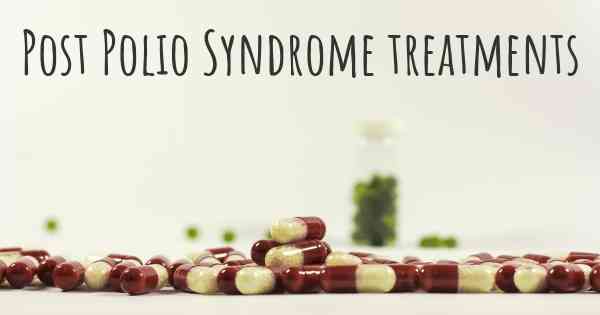
Treatments for Post Polio Syndrome
Post Polio Syndrome (PPS) is a condition that affects individuals who have previously had polio. It is characterized by new or worsening symptoms that occur many years after the initial polio infection. While there is no cure for PPS, there are several treatments available to manage the symptoms and improve the quality of life for those affected.
1. Physical Therapy
Physical therapy plays a crucial role in managing PPS. A physical therapist can design a personalized exercise program to help strengthen weakened muscles, improve mobility, and reduce pain. They may also recommend assistive devices such as braces, crutches, or wheelchairs to aid in mobility.
2. Occupational Therapy
Occupational therapy focuses on improving daily living skills and enhancing independence. An occupational therapist can provide strategies to conserve energy, adapt the environment, and suggest assistive devices to make daily activities easier. They may also recommend modifications to the home or workplace to accommodate the individual's needs.
3. Pain Management
Pain management is an essential aspect of PPS treatment. Medications such as nonsteroidal anti-inflammatory drugs (NSAIDs) or analgesics may be prescribed to alleviate pain. Additionally, alternative therapies like acupuncture, massage, or heat therapy can provide relief for muscle and joint pain.
4. Assistive Devices
Assistive devices can greatly improve the quality of life for individuals with PPS. Devices such as orthotics, braces, or splints can help support weak muscles and improve mobility. Mobility aids like canes, walkers, or wheelchairs can assist with balance and walking difficulties.
5. Breathing Support
Breathing support may be necessary for individuals with respiratory muscle weakness due to PPS. Non-invasive ventilation (NIV) devices, such as bilevel positive airway pressure (BiPAP) machines, can help improve breathing and prevent respiratory complications.
6. Energy Conservation
Energy conservation techniques are important for managing fatigue, a common symptom of PPS. This involves pacing activities, taking regular breaks, and prioritizing tasks to conserve energy throughout the day. Occupational therapists can provide guidance on effective energy management strategies.
7. Psychological Support
Psychological support is crucial for individuals with PPS, as the condition can have a significant impact on mental well-being. Support groups, counseling, or therapy can help individuals cope with the emotional challenges associated with PPS. It is important to address any anxiety, depression, or stress that may arise.
8. Healthy Lifestyle
Adopting a healthy lifestyle can contribute to managing PPS symptoms. This includes maintaining a balanced diet, engaging in regular exercise within individual capabilities, getting enough rest, and avoiding excessive physical or emotional stress. It is also important to manage any other existing health conditions effectively.
9. Medications
Medications may be prescribed to manage specific symptoms of PPS. For example, anticholinergic drugs can help reduce excessive saliva or sweating, while muscle relaxants may be used to alleviate muscle spasms. It is important to consult with a healthcare professional to determine the most appropriate medications for individual needs.
While there is no cure for PPS, a comprehensive approach that combines various treatments can help manage symptoms, improve function, and enhance the overall quality of life for individuals living with this condition.
Posted Aug 22, 2017 by Richard 700
Posted Jul 20, 2019 by Terry 3000
Posted Oct 7, 2017 by daniel 800

